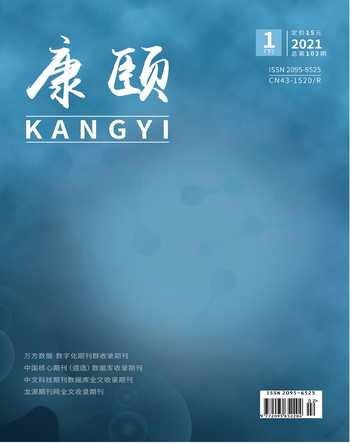簡述基質金屬蛋白酶
閆珊珊 耿惠
【摘要】基質金屬蛋白酶(MMPs)是自然界的一類蛋白酶,主要作用為維持膠原基質的完整性。參與多種生理和病理過程,生理狀態下主要作用為降解細胞外基質,促進細胞增殖、遷移和分化,并在細胞凋亡、血管生成、組織修復和免疫反應;病理狀態下可能與腫瘤細胞的生長和轉移、心血管疾病和炎癥疾病等息息相關。在本篇綜述中,大致總結了基質金屬蛋白酶的分類、結構和生理病理功能,為進一步的研究MMPs提供依據。
【關鍵詞】基質金屬蛋白酶;細胞外基質;腫瘤轉移
【中圖分類號】R722.1 【文獻標識碼】A 【DOI】10.12332/j.issn.2095-6525.2021.02.290
19世紀60年代,有學者第一次提出來基質金屬蛋白酶(MMPs)的概念[1]。從那時起,基質金屬蛋白酶的研究領域經歷了廣泛而深刻的研究。到現在為止,人基質金屬蛋白酶家族包含28個鋅依賴性內肽酶成員,屬于梅津菌素超家族[2]。MMPs是大量分泌的蛋白質,根據酶序列排列對MMPs進行分類[3-5]。MMPs的基本蛋白質結構由前肽、催化域和類血球蛋白結構域組成[6]。前肽結構域長約80個氨基酸,負責將MMPs維持在非活性狀態[7-8]。催化結構域由170個氨基酸組成。C末端的類血粘蛋白結構域含有近200個氨基酸,并通過一個富含脯氨酸的柔性鉸鏈區連接到許多基質金屬蛋白酶的催化結構域上[4]。
MMPs活性的轉錄調控包括MMPs基因表達、轉錄穩定性、啟動子多態性和表觀遺傳改變[9]。基質金屬蛋白酶(MMPs)作為膠原酶的作用仍然是其最重要的生理功能。在正常生理條件下,對維持組織的異質性至關重要,還可能影響細胞表面的生物活性分子,調節各種細胞和信號通路[10]。病理狀態下,MMPs 參與腫瘤細胞的生長和轉移、缺氧性疾病的病理過程[11]。
基質金屬蛋白酶參與許多生物學過程,是心血管疾病、急性炎癥反應、肌肉損傷和癌癥的重要生物標志物。隨著研究的深入,基質金屬蛋白酶家族每個成員都表現出其特有的生物學結構、作用機制及對參與到機體的發生、發展的各個方面。我們現代醫學的進步目的就是為了精準醫學,因每個個體的異質性,所以MMPs在不同情況下可能會產生不一樣的化學反應。因此,基質金屬蛋白酶的研究還尚在路上。
參考文獻:
[1]GROSS, J. & LAPIERE, C. M. Collagenolytic activity in amphibian tissues: a tissue culture assay. Proc. Natl. Acad. Sci. U.S A. 1962;48:1014–22.
[2]Vandenbroucke, R. E. & Libert, C. Is there new hope for therapeutic matrixmetalloproteinase inhibition? Nat. Rev. Drug Discov.2014(13): 904–927.
[3]Hadler-Olsen, E., Winberg, J.-O. & Uhlin-Hansen, L. Matrix metalloproteinases in cancer: their value as diagnostic and prognostic markers and therapeutic targets. Tumour Biol.2013(34):2041–2051.
[4]Brinckerhoff, C. E. & Matrisian, L. M. Matrix metalloproteinases: a tail of a frog that became a prince. Nat. Rev. Mol. Cell Biol.2002(3): 207–214.
[5]Fanjul-Fernández, M., Folgueras, A. R., Cabrera, S. & López-Otín, C. Matrix metalloproteinases: evolution, gene regulation and functional analysis in mouse models. Biochim. Biophys. Acta 1803,2010:3–19.
[6]Bourboulia, D. & Stetler-Stevenson, W. G. Matrix metalloproteinases (MMPs) and tissue inhibitors of metalloproteinases (TIMPs): Positive and negative regulators in tumor cell adhesion. Semin. Cancer Biol.2010;20: 161–168.
[7]Van Wart, H. E. & Birkedal-Hansen, H. The cysteine switch: a principle of regulation of metalloproteinase activity with potential applicability to the entire matrix metalloproteinase gene family. Proc. Natl. Acad. Sci. 1990;87:5578–5582.
[8]Hu, J., Van den Steen, P. E., Sang, Q. X. & Opdenakker, G. Matrix metalloproteinase inhibitors as therapy for inflammatory and vascular diseases. Nat Rev Drug Discov 6.2007:480–498.
[9]Yu, X. F. & Han, Z. C. Matrix metalloproteinases in bone marrow: roles of gelatinases in physiological hematopoiesis and hematopoietic malignancies. Histol. Histopathol. 2006;21:519–531.
[10]Garcia-Irigoyen O, Latasa MU, Carotti S, et al. Matrix metalloproteinase 10 contributes to hepatocarcinogenesis in a novel crosstalk with the stromal derived factor 1/C-X-Cchemokine receptor 4 axis[J]. Hepatology.2015;62(1):166–178.
[11]Mauris J, Woodward AM, Cao Z, Panjwani N, Argueso P. M.Molecular basis for MMP-9induction and disruption of epithelial cell-cell contacts by galectin-3. [J] Cell Sci.2014;127(14):3141–3148.
通訊作者:耿惠,青海大學附屬醫院。

